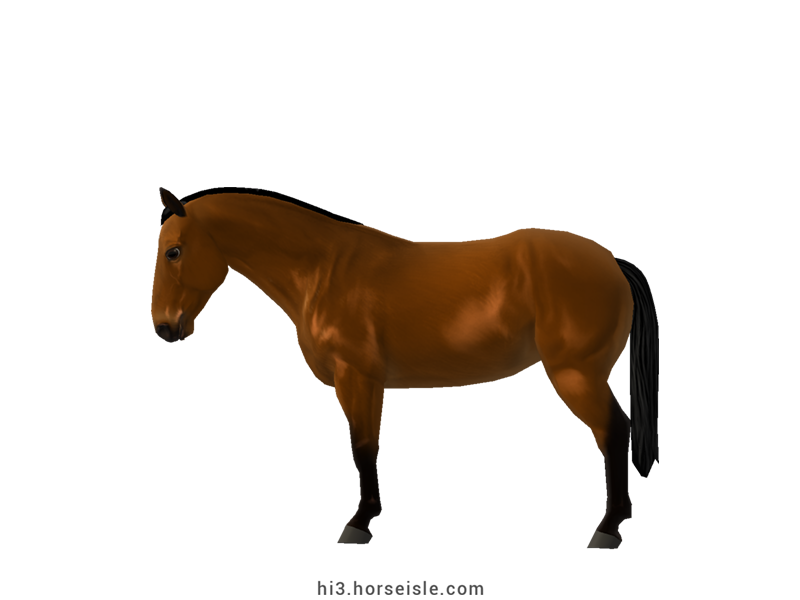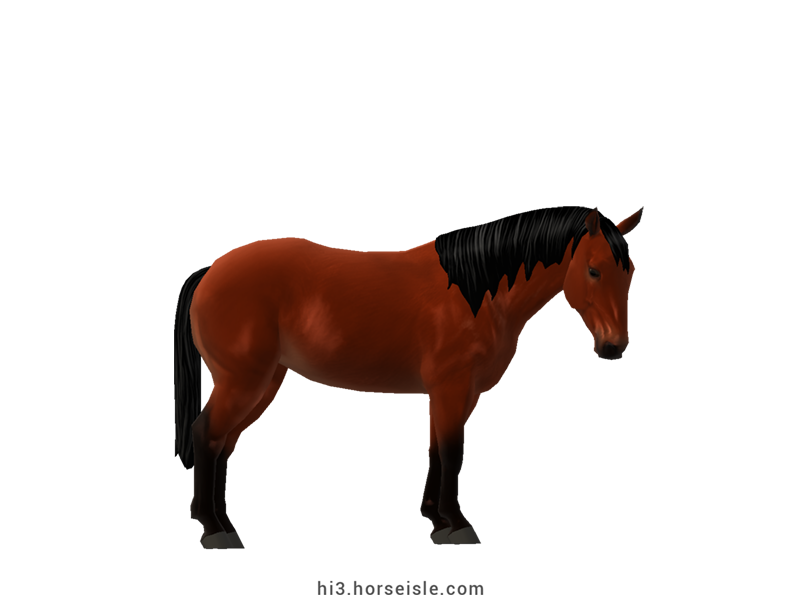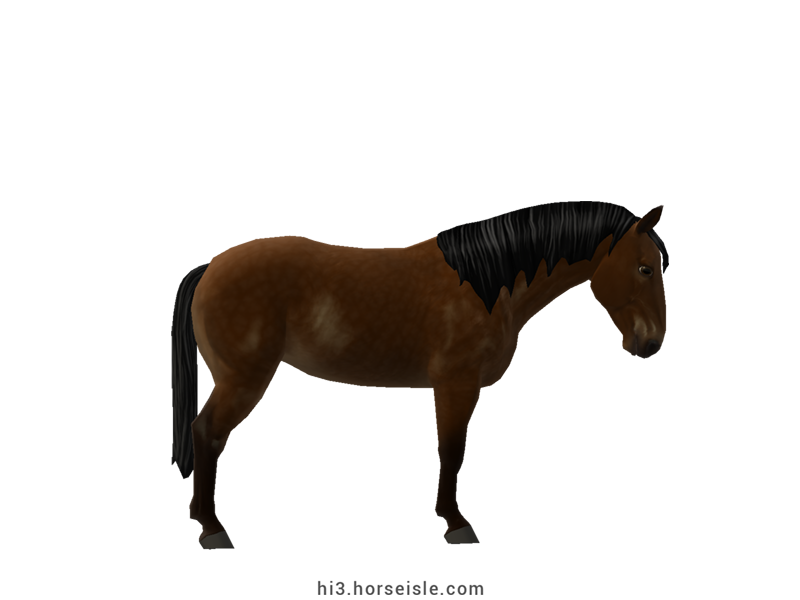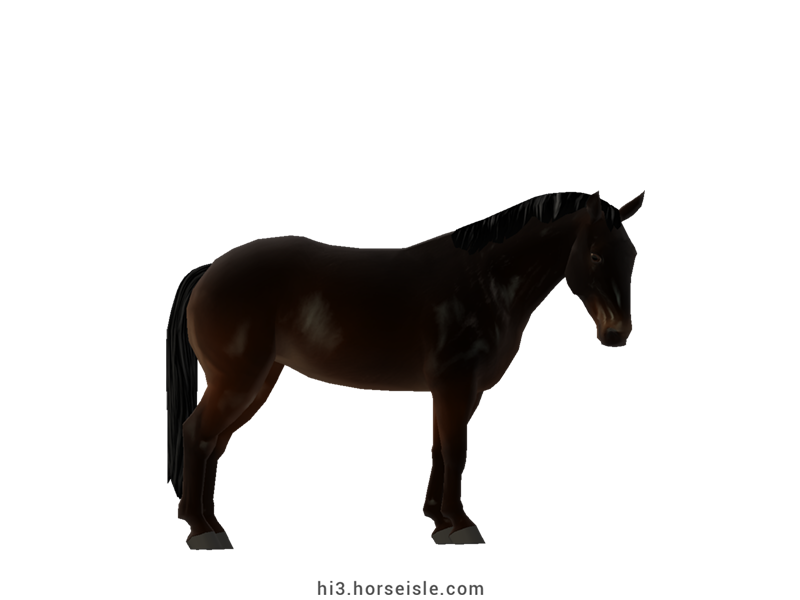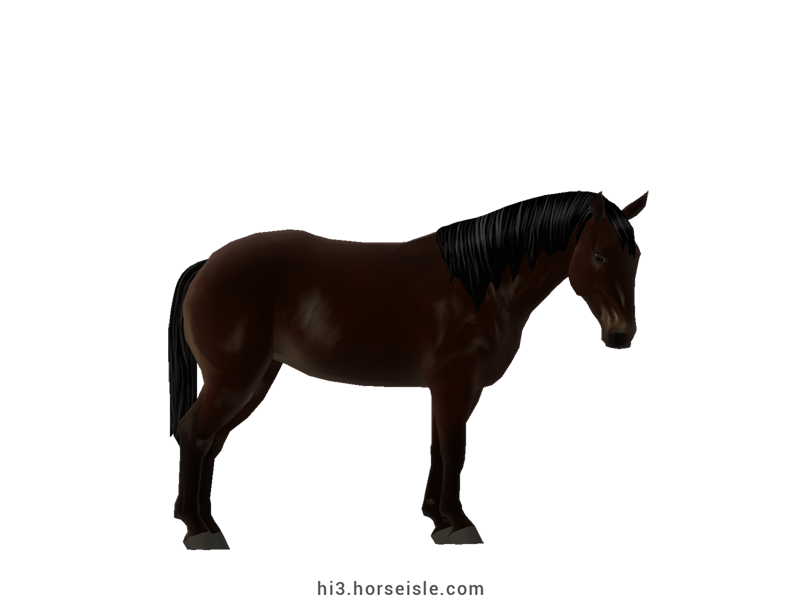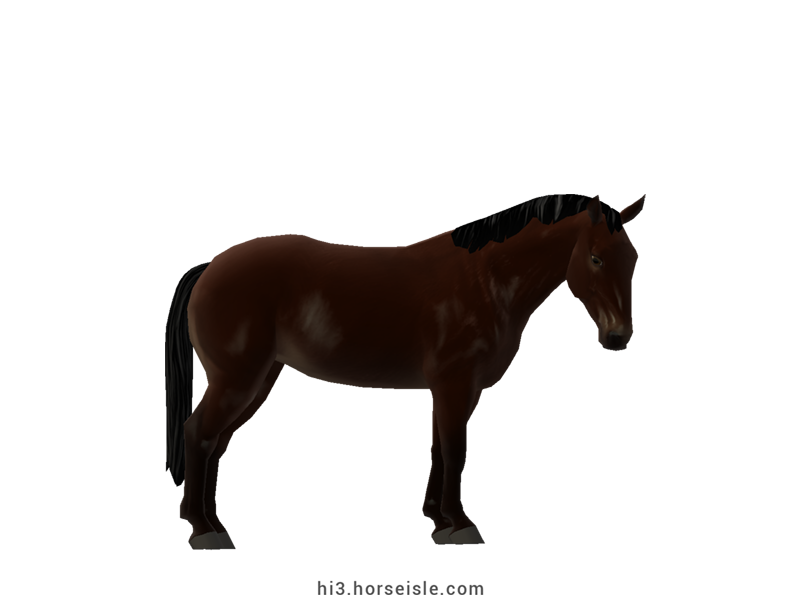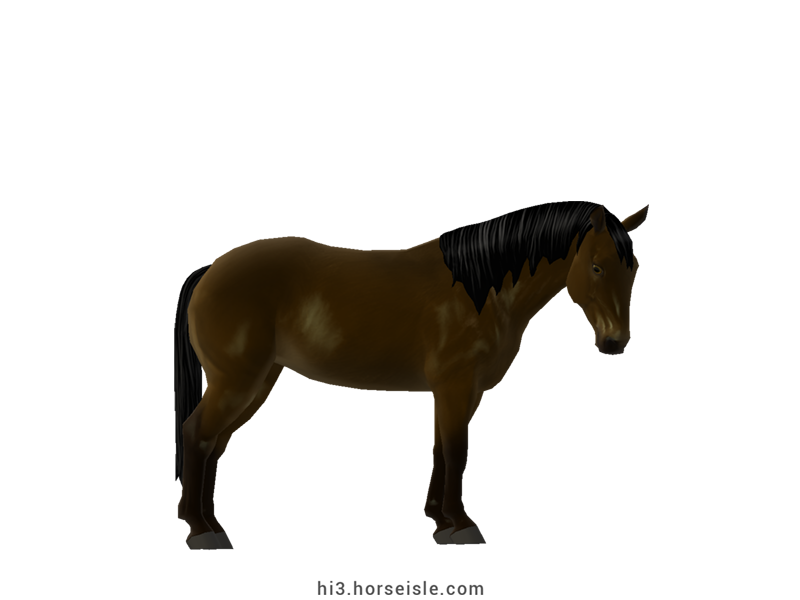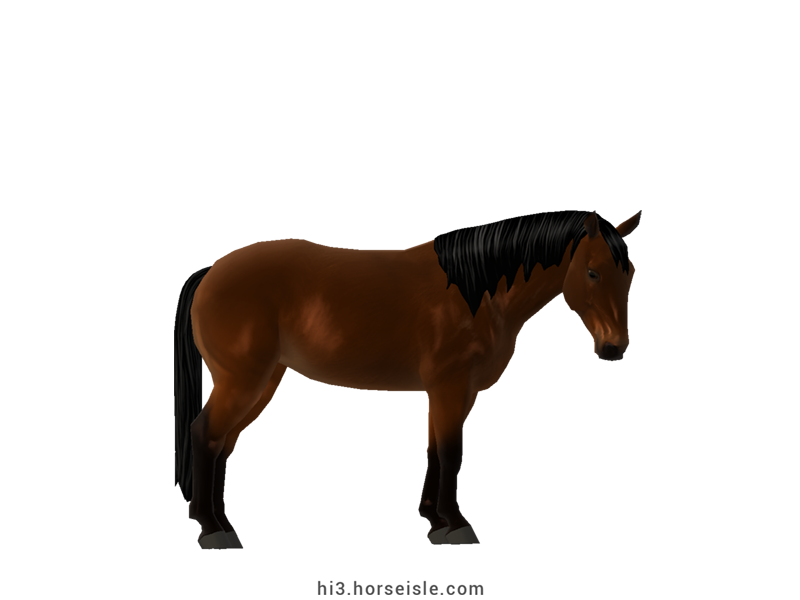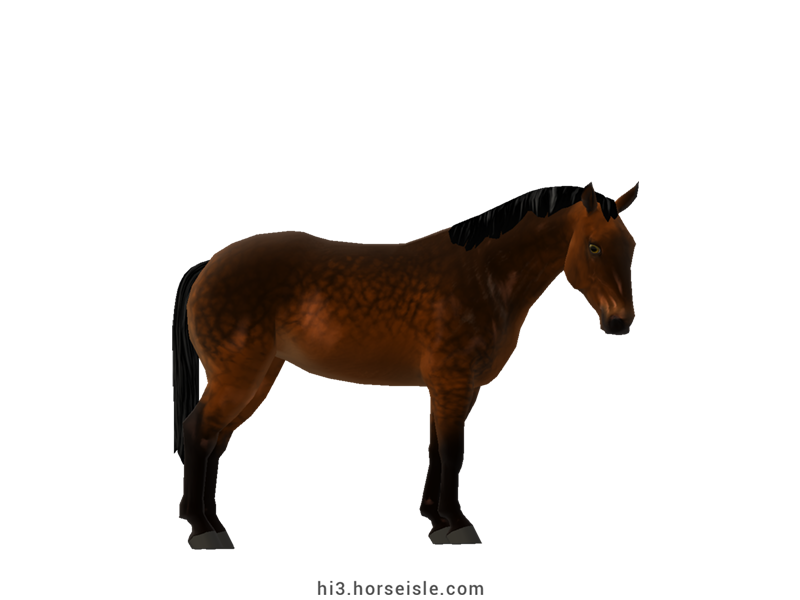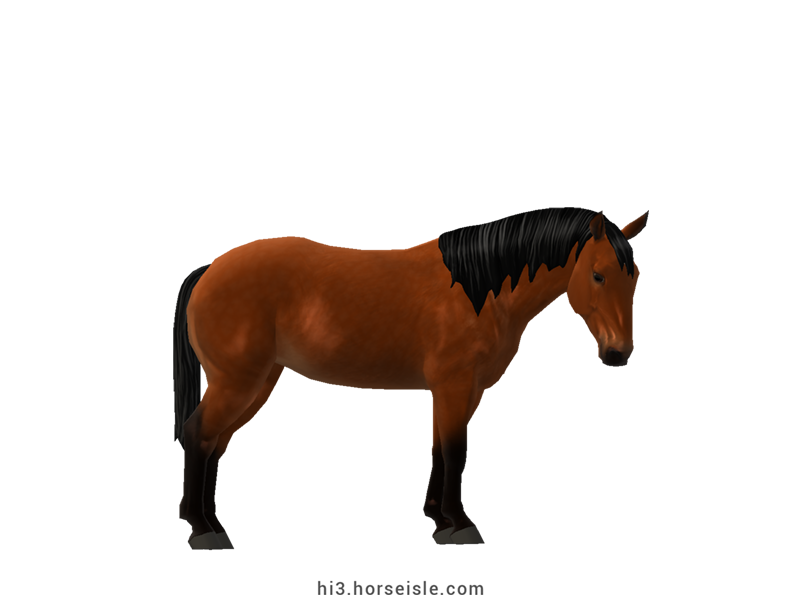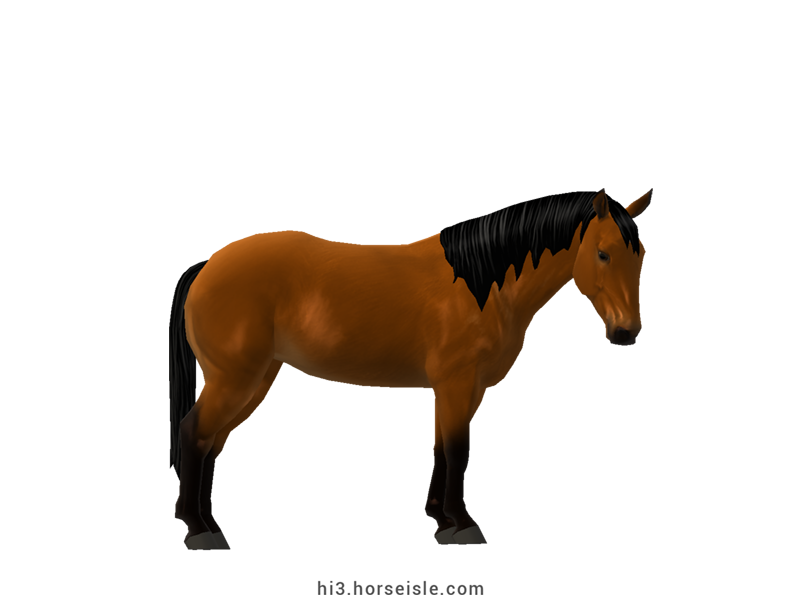Our Massive Real World Equine Reference!
[ INDEX ] Equine Type: Horse Breed: Cleveland Bay (Cleveland) [ PREV ] [ NEXT ]
Of Chapman Horses and Cleveland Bays:
Strong horses with bay coats had roamed Yorkshire during the Middle Ages and maybe even earlier. These horses had good strength and stamina, which allowed them to easily cross the hilly terrains in the Cleveland district.
During the following centuries, these bay horses became popular pack horses, especially among traveling salesmen known as Chapmen, which is why they were nicknamed 'Chapman Horses'. Eventually, these horses received the name "Cleveland Bays", but today they are regarded as the original and heavier form of the Cleveland Bay horse.
The carriage horse of the 16th-18th centuries:
In the 16th century, Cleveland Bays started to serve as carriage horses, a role in which they excelled thanks to their ability to cross rough terrains while pulling a heavy carriage.
By the 18th century, the roads in England were in a better state than they used to be, and that allowed lighter and faster horses to pull heavy carriages as well. This led to a decrease in the popularity of the slower Cleveland Bay, and as a result, breeders realized that they must improve the speed of the breed if they want it to remain in use.
Accordingly, in the 18th century, breeders crossed Cleveland Bay mares with Thoroughbred stallions, in order to improve the speed of their Cleveland Bay horses. This cross generated the Cleveland Bay that we know today: a muscular and strong horse with some lightness of action.
The Yorkshire Coach Horse:
However, as a result of these efforts, the Cleveland Bay was inadvertently pushed toward extinction in the 19th century, since more and more Thoroughbred blood was added to the Cleveland Bay breed, in an attempt to produce a new type of carriage horse: the Yorkshire Coach Horse.
Unlike the Cleveland Bay, the Yorkshire Coach Horse had a stylish disposition, and was far more popular as a carriage horse than the Cleveland Bay, whose numbers started to dwindle.
The Yorkshire Coach Horse:
In 1884, the Cleveland Bay Society was formed, in order to continue the breeding and preservation of purebred Cleveland Bays. The Society also successfully promoted Cleveland Bay breed, which became popular not only in the UK, but also in the USA.
The first half of the 20th century brought with it two World Wars, during which Cleveland Bay horses were extensively used as artillery horses. By the end of World War II, only a small number of Cleveland Bays remained, and by the beginning of the 1960s the breed almost went extinct once again.
However, it was saved from this grim situation by Queen Elizabeth the Second, who bought a Cleveland Bay stallion and allowed other breeders to breed their mares to him. The interest of the Royal Family in the Cleveland Bay breed renewed the interest of other breeders in the breed, especially now that they had a stallion available for them.
The Cleveland Bay today:
Today, even though the population of Cleveland Bay horses is bigger than it was during the 1960s, it is still relatively small, and the breed remains at risk of extinction.
Cleveland Bays are sturdy horses with a wide and muscular body, which rests upon four strong legs with large joints. Despite their heavy appearance, Cleveland Bays are athletic, and are used for driving, show-jumping, and dressage.
Conformation:
Cleveland Bays have a large head with a straight or convex profile, large eyes, and large ears. The neck is long, muscular, and slightly arched. The back is short, the croup is long, and the hindquarters are muscular. The girth is deep, and the body is wide. The legs are thick and muscular with broad joints, and the hooves are large.
The mane is short or medium in length, but the tail can grow long. The legs are clear from feathering.
Performance metrics:
The following are the: range, average, (SD), and MOE of performance metrics of ordered Cleveland Bays in Horse Isle (not bred ones). In rare cases,
Speed: 15.7-16.8, 16.3 (0.2), 0.05.
Sprint: 58-70, 64 (2), 0.43.
Accel: 0.89-1.07, 0.96 (0.04), 0.01.
Decel: 1.03-1.16, 1.08 (0.03), 0.01.
Jump: 4.99-5.25, 5.12 (0.06), 0.01.
Pull: 3.27-3.95, 3.55 (0.14), 0.03.
Turning: 48.70-63.41, 55.58 (2.90), 0.57.
Reverse: 2.4-3.0, 2.7 (0.1), 0.03.
Stamina: 52.68-56.68, 54.57 (0.87), 0.17.
Reaction: 0.82-0.90, 0.86 (0.02), 0.00.
Mismarked Cleveland Bays and chestnut Cleveland Bays:
For many years, Cleveland Bay horses born with chestnut coats or with white markings other than a small star were prohibited from the breeding program of the Cleveland Bay. However, in 2005, it was decided that while white markings are highly discouraged, mismarked horses will still be eligible for registration and for serving as breeding stock. Chestnut horses are also allowed to be used as breeding stock.
For more info, see the 'Mismarked Cleveland Bay' and the 'Mismarked Cleveland Bay - Chestnut Division.'
Coats & Height:
Colors & patterns: always dark-bay (termed 'brown' in Horse Isle) or regular bay. The coat is always solid and can be sooty. White markings are not allowed save for a small star on the forehead.
Breeding notes: crossing two regular bay horses bears a 25% chance of getting a chestnut foal. Any chestnut foals born to two Cleveland Bays will not be eligible for registration as regular Cleveland Bays, but instead will be registered in the chestnut division (see 'Mismarked Cleveland Bay - Chestnut Division' for more info.)
Height: 16hh to 16.2hh.
[ INDEX ] [ PREV ] [ NEXT ]

